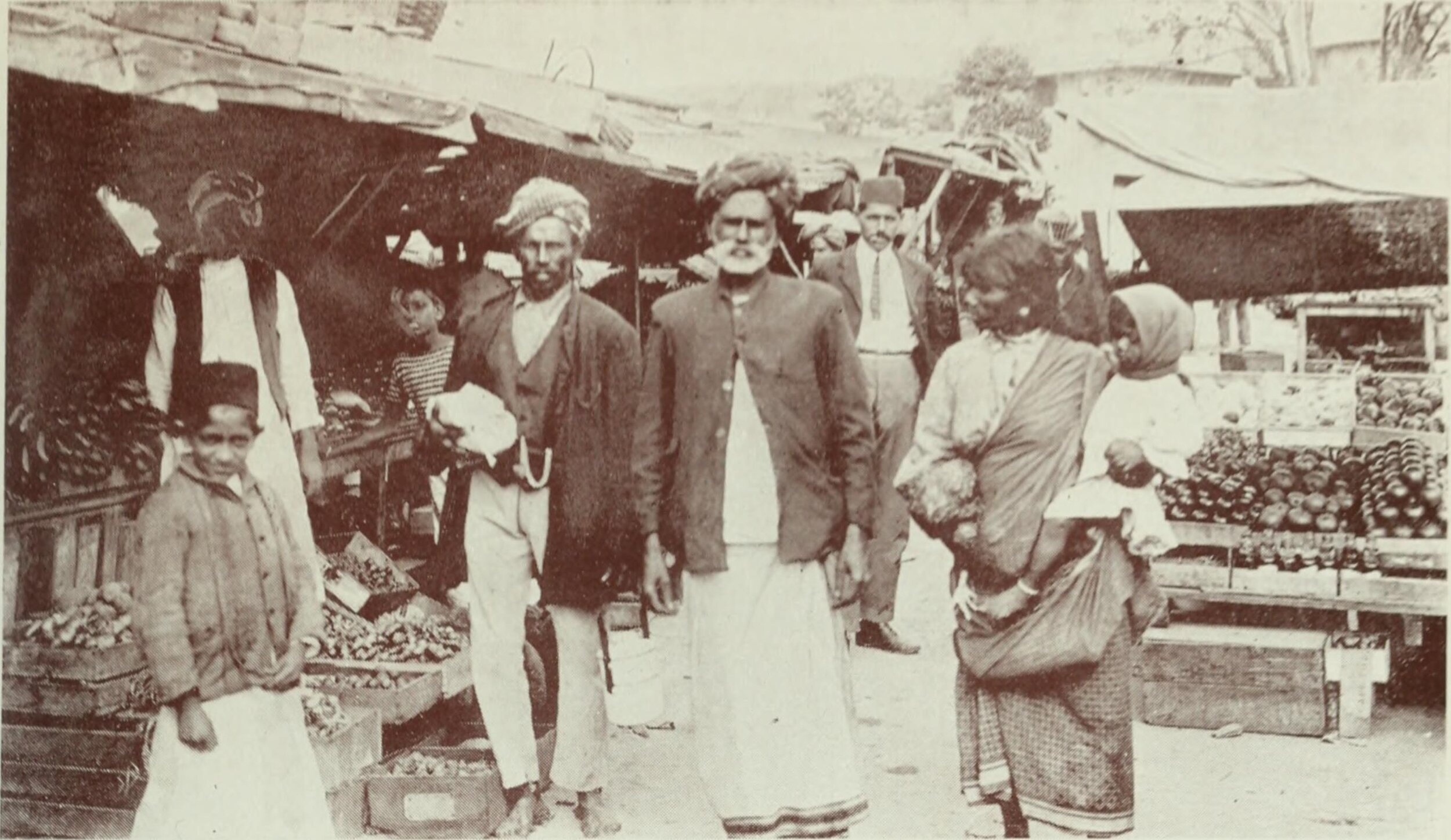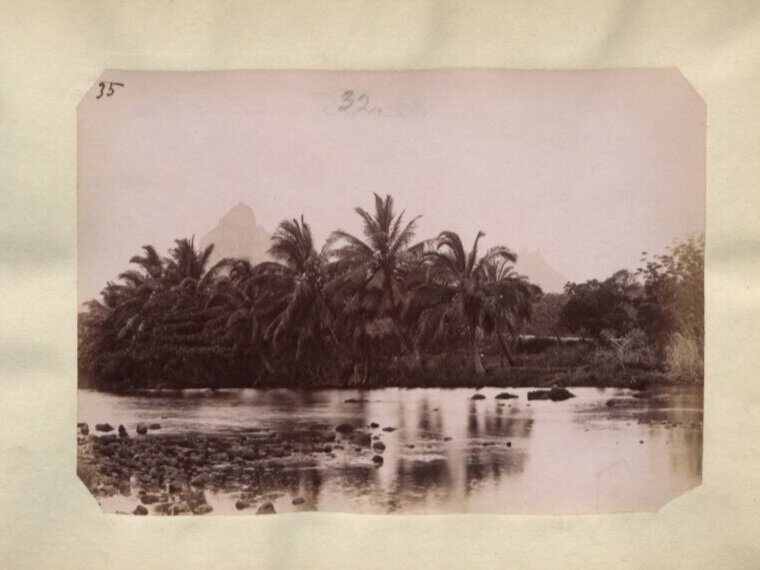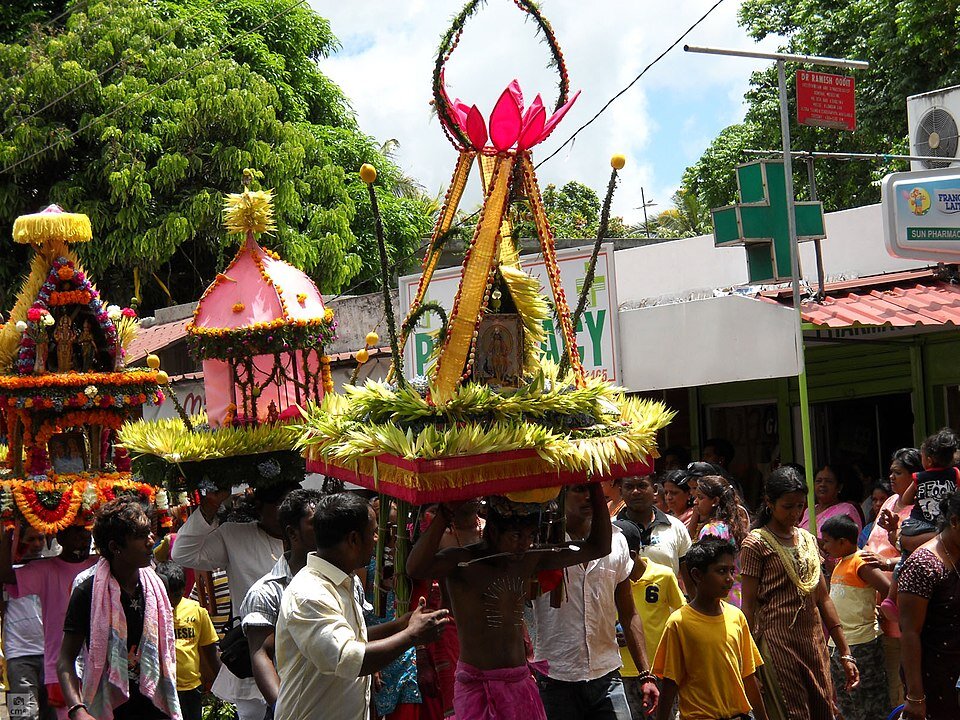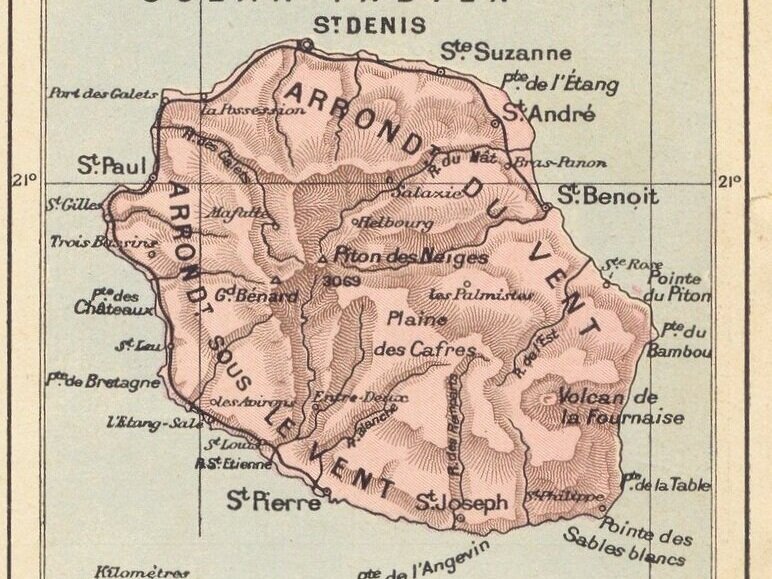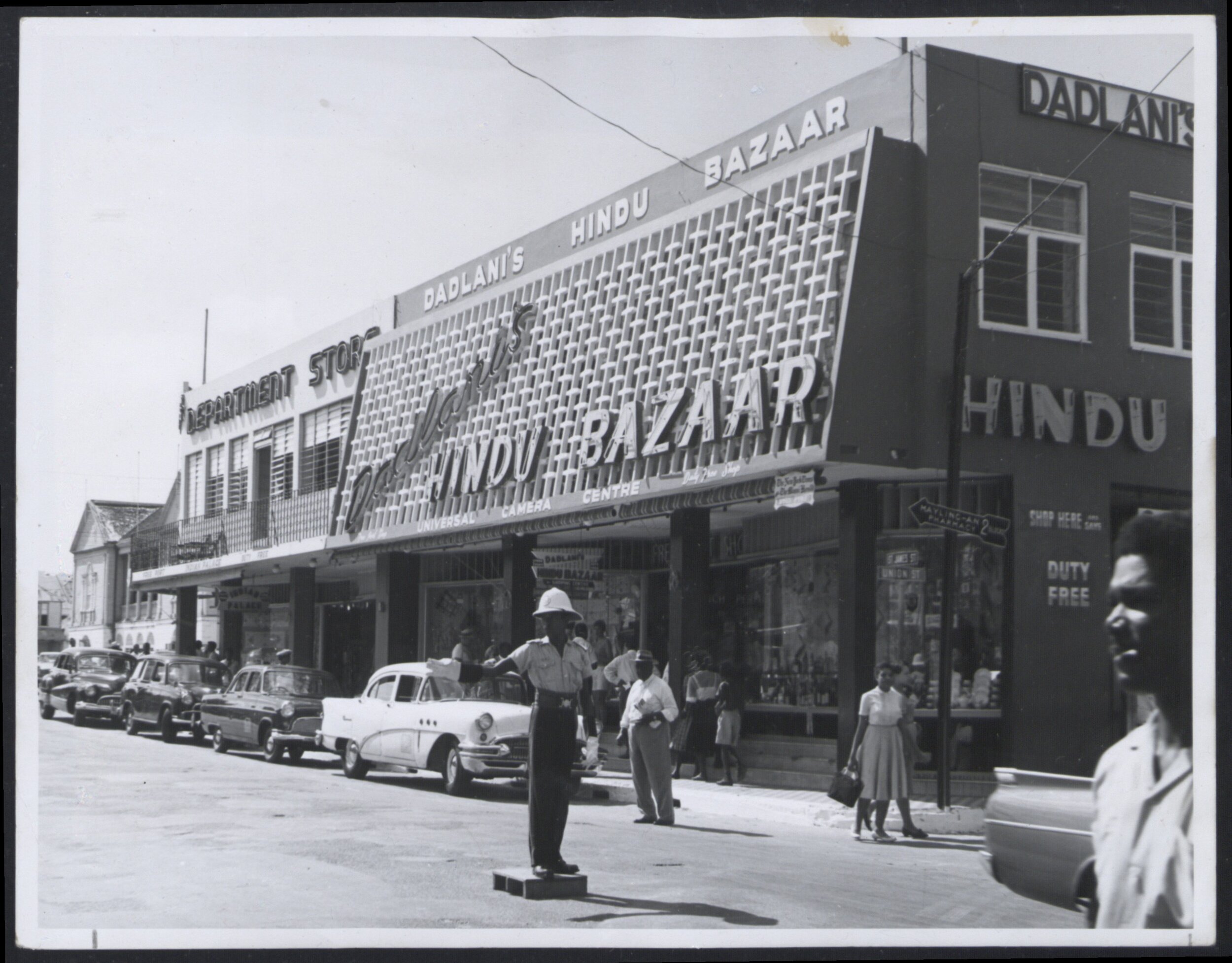
Public Articles
Australia
“Starting from the 1860s, tens of thousands of Pacific Islanders were taken to Australia to work on plantations in Queensland, often by force or trickery.”
Photo credit: State Library Of Queensland
The Caribbean
One of the anomalies of the commemoration of Indentureship in Guyana has been the refusal to acknowledge the role of Africans in the labour system that had been introduced after the Abolition Act of slavery in 1834…
By Ravi Dev
Photo retrieved from The Field Museum Library via Flickr
“With the passing of the Emancipation Act in 1833, the sugar planters in British Guiana (Guyana) anticipated a labour shortage…”
By Odeen Ishmael
Photo credit: The Field Museum Library via Flickr
“The purpose of this article is to inform Guyanese in general, and the people of African descent in particular about the participation of people of African descent in Guyana’s 19th century immigration schemes”
By Cecilia McAlmont
Photo credit: The Internet Archive via Flickr
“Felicity is a village in Trinidad on the edge of the Caroni plain, the wide central plain that still grows sugar and to which indentured cane cutters were brought after emancipation, so the small population of Felicity is East Indian…”
“While on May 5th the 175th Anniversary of Indian Arrival was commemorated, there was another anniversary two days earlier that slipped by unnoticed…”
By Mary Noel Menezes
Photo credit: The Field Museum Library via Flickr
Indian Culture in Guadeloupe and Martinique
“The British planters in the neighborhood colonies lik Trinidad, Guyana and Jamaica had saved their sugar plantations from a similar crisis of shortage of labour by importing labourers from India”
By Suresh Kumar Pillai
“Even though the planters in British Guiana (Guyana) had expressed interest in introducing Chinese labourers since Emancipation, it was not until 1851…”
By Odeen Ishmael
Photo credit: The National Archives UK
An indentured labourer's daughter remembers
“At age 107, Sajo Jhagroo, daughter of an indentured labourer, still has vivid memories of her childhood and the stories her father told her about his life in the barracks.”
By Sascha Wilson
“Indentured servitude in British America was the prominent system of labor in British American colonies until it was eventually overcome by slavery. During its time, the system was so prominent that…”
By Wikipedia
Photo credit: The U.S. National Archives
“And that is why a master genealogist in the Caribbean island is helping them trace their roots. When Kamla Persad Bissessar visited India as the Prime Minister of Trinidad and Tobago in January 2012, there was something life-altering in store for her…”
“Shamshu Deen turned his passion for genealogy into a challenging career that makes him and hundreds happy.”
Photo credit: The National Archives UK via Flickr
“May 2020 marks 175 years of the arrival of the first Indians in Jamaica. Little did anyone know that a group of 261 Indians, landing at Old Harbour Bay in 1845, would inextricably link the fates of the people of these two countries for all times to come.”
By M Salava Naik
Photo credit: SMU Libraries Digital Collections via Flickr
Between 1845 and 1917 a total of 143,939 Indians migrated to Trinidad under the system of Indian indenture. Most of these indentured labourers were drawn from the agricultural and laboring classes of the Uttar Pradesh and Bihar regions of north India…”
“The people and customs of India are integral to the history of the Caribbean and remain part of the region’s way of life. The first people from India came to Jamaica on board the S. Blundel Hunter on May 10, 1845.”
By StephanieK
From 1845 to 1921, over 36,000 East Indians, mainly of the Hindu faith, were brought to Jamaica. Close to two-thirds of them remained. Following the abolition of slavery in the1830s, after failed attempts to source much-needed labour through bountied European immigration, the Jamaican Government turned to India and China.
By Dr. Rebecca Tortello
“In April this year, I visited the Indian Caribbean museum near the town of Chaguanas in Trinidad. Set in a large hall, the museum had no other visitors. Its curator, Saisbhan Jokhan, 69, came out to greet me.”
By Namit Arora
“The word coolie is the most explosive word in the Caribbean Indian experience. If there was ever a unifying theme among the descendants of indentured Indians around the globe, it was the word coolie,” says Lomarsh Roopnarine, an expert in Indo-Caribbean history.
By Aisiri Amin
“The Indian community is the largest minority group in Grenada. This group was first introduced during the second half of the nineteenth century when Grenada experimented with indentured labour.”
By Ron Sookram
“The English Commonwealth in 1651 had a challenge on their hands. During the third English Civil War, their commander Oliver Cromwell defeated the forces of Charles Stuart (the future King Charles II) first at Dunbar, and then precisely a year later, at Worcester.”
By Cryssa Bazos
Photo credit: The Internet Archive via Flickr
“I am the daughter of a Windrush-era migrant who arrived in the United Kingdom from Guyana (then British Guiana) in 1961. My father was one of almost 180,000 people who migrated from the Caribbean to the UK between 1948 and 1963.”
“The following story has its roots in Manding Muslim civilization which dominated West Africa for three hundred years and stretched from beyond Timbuctu to the Atlantic. It helps to explain why Muslims in Trinidad are still called ‘Madingas’.”
“A Young Soldier of Islam” Haji Ruknudeen Sahib
“Prepared on the occasion of the fiftieth anniversary of Haji Ruknudeen’s death, this lecture, A Young Soldier of Islam: Haji Ruknudeen Sahib, examines the contributions made by this indentured immigrant who came to these shores some 120 years ago and spent 75 years in service to the Muslim community.”
“In her recently-released book Coolie Woman, author Gaiutra Bahadur traces the life story of her great-grandmother, who boarded an indenture ship in Calcutta in the early 1900s.”
By Lakshmi Gandhi
Photo credit: The National Archives UK via Flickr
“A memorial plaque in honour of Indian indentured labourers was unveiled on January 11, 2011 at Kidderpore Dock, Kolkata Port by Union Minister for Overseas Indian Affairs Vayalar Ravi.”
By Press Information Bureau India
Photo credit: The British Library
“For over three-quarters of a century (1838-1917), Indian indentured labourers were imported from the sub-continent of India to the West Indian colonies, ostensibly to fill the void created as a result of the mass exodus of ex-slaves from plantation labour…”
Photo credit: The Field Museum Library via Flickr
“An Account of the Indian and Chinese Immigrants in British Guiana… Indeed, the earliest attempt to import indentured labour from India to British Guiana ended in scandal and public outcry when antislavery advocates’ accusations that the new labour system was really no different from slavery”
By Anne Marie Lee-Loy
Photo credit: The National Archives UK via Flickr
“The arrival of indentured labourers, especially those from India, enabled the planters to establish sugar as a monoculture, to reap profits over an extended period of time while keeping wages low…”
By Evan Radhay Persaud
Photo shows the Mersey
“An issue with the Colonial Classification of Rum is that it defines the spirit by the three European powers that came to the Caribbean to conquer, and the contributions made by other groups are essentially erased…”
This post will attempt a brief look at this minority of the captive population to see what it reveals about the nature of Saint Domingue, its heterogeneous enslaved population, and the global networks in the crown jewel of 18th century French colonialism.
By Yvie
“Can we imagine a world in which Indo-Caribbean women are not the subject of headlines in the form of murder? Can we imagine an Indo-Caribbean community that holds perpetrators of gender-based violence accountable? Where is the outrage for murdered Indo-Caribbean women?”
Photo credit: SMU Digital Libraries via Flickr
“Between 1845 and 1921, over 36,000 Indians were brought to Jamaica. Upon their arrival, the Indians were dispersed to the plantations in Portland, St Thomas, St Mary, Clarendon, and Westmoreland.”
By M Salava Naik
Indentureship experience in Jamaica – common suffering of Muslims and Hindus
“From 1845 to 1921, over 36,000 East Indians, mainly of the Hindu faith, were brought to Jamaica. Close to two-thirds of them remained.”
Photo credit: SMU Libraries via Flickr
Nearly 3% of the current population of Martinique comprises of Indians. Recently mayor of Saint Pierre, Christina Raffa, called a 3-day festival to commemorate the historical event and to thank the Indian indentured labourers who participated in the development of Martinique.
By Newsgram
Photo credit: The British Library via Flickr
“From the time of the abolition of the slave trade in 1807 and, particularly, during the period of the campaign to end slavery, the planters of…”
By Odeen Ishmael
Photo credit: The National Archives UK
“LAST Wednesday, 5th May, Indian Arrival Day was commemorated countrywide. The University of Guyana and the High Commission of India conducted a high-powered Symposium and the Media, both print and electronic, carried multi-dimensional stories on indentured immigration and on the descendants of the immigrants.
“…Each Chinese laborer had to sign a contract under which he was required to perform any kind of work he was ordered to by the British Immigration Agent. He had to work for at least nine and a half hours a day, six days a week. Sunday was a day of rest…”
By Peter Halder
“In 2001, Derek Walcott commissioned award-winning filmmaker Yao Ramesar to produce a series of films that would allow students across the Caribbean to access and explore these works. The Saddhu of Couva (The Star-Apple Kingdom, FSG, 1979) is the first in the series, narrated and written by Walcott.”
By Yao Ramesar
“However, the attitude of the majority of the planters caused the fear of the loss of labour to become a self fulfilling prophecy. After a brief vacation at the end of apprenticeship, most of the now ex apprentices returned to the plantations where they had laboured during slavery and apprenticeship, but they were demanding different conditions of service.”
“It was 150 years ago, precisely on March 11, 1860 that the ship Whirlwind, some 78 days after leaving Hong Kong, docked at Port Georgetown with 371 Chinese immigrants on board including 56 women and 4 girls.”
“Despite the enthusiasm of the planters for Chinese immigrants, the “Chinese Experiment” was comparatively short and erratic and did not yield the expected results. There were several reasons for its failure to do so.”
Debunking the myth that Indians were ‘dependent coolies’ in British Guiana
“In 1936, 16 years after indenture was abolished, the Indian population was 140,718 with 74,087 males and 66,231 males. Of this total, 55,630 were living on the estates while 85,088 were off the estates, according to the Immigration Agent General report of 1937.”
“In a plea for genuine recognition to all six races, the “invisible minority” of Guyanese of Chinese descent, as they call themselves, believe their contributions to national development are being overlooked.”
By Kurt Campbell
K Kempadoo, ‘“Bound Coolies” and Other Indentured Workers in the Caribbean: Implications for debates about human trafficking and modern slavery’, Anti-Trafficking Review, issue 9, 2017, pp. 48—63, www.antitraffickingreview.org
“Chinese immigration to Trinidad occurred in four waves. The first wave of Chinese immigrants arrived in Trinidad on 12th October 1806 on the ship Fortitude. Of the 200 passengers who set sail, 192 arrived. They came, not from mainland China, but from Macao, Penang and Canton.”
“The "coolie trade" refers to the importation of Asian contract laborers (especially Chinese and Indians) under force or deception during the 19th century. It emerged during the "gradual abolition" of slavery in the early 19th century, and coolies were exploited as substitutes for slave labor.
“On Windrush Day, the story of Caribbeans of Indian descent aboard the eponymous ship is not a straightforward history to trace or tell”
In today’s podcast, Rajan travels to Trinidad & Tobago to speak to Dr. Sherry-Ann Singh, a Professor of Indian History at the University of the West Indies who speaks to us about her thoughts on where religion, especially Hinduism, sits in modern-day Trinidad & Tobago, culture and identity and how the Ramayan’s Sita has undergone a variety of interpretations throughout the ages; from being seen as subservient to being in control of her destiny.
“In this remarkable conversation, Dr Terencia shares her research on the indentureship of Indians and migration to the Caribbean islands and tells us of the often unreported brutality of the experience, whilst challenging the many misconceptions we have of their journeys.”
"In India — in the subcontinent — a 'coolie' is someone who carries baggage," said Bahadur. "And these women sort of carry the baggage of colonialism; the expectations of white men, the expectations of Indian men. Here they have to sort of preserve family, preserve culture."
By Lakshmi Gandhi
“Indian heritage and culture are the cornerstone of the diaspora, transcending time and place, surviving obstacles and severe situations, remoteness and influences. Despite speaking different languages, living in different and sometimes remote places, sustaining and improving our lives, we share heartfelt feelings of Indianness and the urge and yearning to connect and belong. Meanwhile, we have inherited and taken a lot from India and transformed our lives and the new countries of our birth or adoption.”
By Ashook Ramsaran
Fiji
“A former prime minister urged Fiji to better acknowledge its past, especially the 40 years indentured Indian labor.”
By Grant Wyeth
Photo credit: Jared Wiltshire on Flickr
“Indo-Fijians are mostly descendants of indentured laborers brought in by the British to work on CSR Australia-owned sugar plantations.”
By Michael Field
Photo credit: The Internet Archive
“Girmit, or indentured labour from 1879 to 1920, is typically recognised as originating from India. This includes Pakistan and Bangladesh, whose geographic boundaries were encompassed as part of India during the girmit era.”
Photo credit: The National Archives UK via Flickr
“The exodus of Fijian Indians should start soon as some of the brightest and better off, shut out of power by the strongly nationalistic interim government, decide to leave the sinking ship which was their island home.”
Indians should not bask in success stories: Ex Indo-Fijian Prime Minister
“
Former Fijian PM of Indian-origin has appealed to the Indian diaspora to guard against being deluded by certain success stories.”
by The Economic Times
“DELIBERATIONS from Dialogue Fiji and Citizens’ Constitutional Forum’s Dialogue on Ethnic Relations next month will be fed into the CSO report to the UN’s Committee on Elimination of Racial Discrimination.”
By Felix Chaudhary
“The descendants of indentured labourers who arrived in Fiji more than 100 years ago have undergone many changes, says University of the South Pacific academic Professor Vijay Naidu…”
By Repeka Nasiko
“Descendants of the Girmitiyas, born and bred here, have every right to be called Fijians because they have earned it through their immense contribution to Fiji…”
By Nemani Delaibatiki
“…The British and other European colonisers took with them a whole spread of games such as the various forms of football along with cricket, hockey, tennis, rowing, swimming, cycling, golf, polo and racing of animals among others…”
“THE term is “Madrasi” and not “Mandraji” as some have perceived for decades in Fiji. South Indians came to Fiji well before 1903 as part of the indenture system. However, on record the first ship from Madras named Elbe III reached Fiji on May 22, 1903…”
“Each time you travel past Wainadoi, on your way to Navua and beyond, you would most probably see a few lines of mysterious-looking trees that spring out of a patchwork of grass and shrubs prolific in rainy parts of Viti Levu…”
“The debate on whether Indians in Fiji are “vulagi” (visitors) has reached offshore, and discussion in the New Zealand media is getting intense…”
“Girmit, or indentured labour from 1879 to 1920, is typically recognised as originating from India. This includes Pakistan and Bangladesh, whose geographic boundaries were encompassed as part of India during the girmit era.”
“1835 - Missionaries first came to Fiji via the Wesleyan mission in Tonga.
1851 - 1860 - Due to epidemics of various diseases, thousands of indigenous Fijians died. Their numbers did not begin to rise again until the 1950s.”
By the University of Maryland
“Such were the findings of Dr Brij Lal, the former permanent secretary for the Ministry of Education and sitting member of Parliament while carrying out research into the life of his grandfather, Khanjan Lal, an indentured labourer who found his way to Fiji during the girmit era…”
By Matilda Simmons at The Fiji Times
“FIJI’S one and only Hindi newspaper, Shanti Dut, the vernacular newspaper of the Fiji Times Ltd, has been shining for 82 years in Fiji.
Two years ago, the newspaper celebrated its 80th anniversary.”
“In Fiji and abroad, a familiar name that comes to mind when you think of quality Indians sweets and snacks is Bhikhabhai.
Their sweets and snacks are top quality yet competitively priced. Bhikhabhai’s director and CEO Viraaj Kantilal Lad said they now had four shops based in Ba, Lautoka, Nadi and Suva.”
By Atasa Williams at The Fiji Times
“Gujarat is famous for celebrating festivals with huge enthusiasm. They have a range of traditional dances based on their rich culture and tradition…”
Photography by dpbirds, CC BY-NC-ND 2.0, via Flickr.
“Fijian-Indians living in New Zealand are opposing moves by the government to classify them as Asians and not Pacific Islanders.”
Image by peonyandthistle , CC BY-NC-ND 2.0, Retrieved from Flickr.
“More than 140 years of Fiji’s Indian-origin community’s history will be remembered in a special commemorative event in Auckland next month.”
By Arvind Kumar
“On the fronts of 19th-century postcards displayed in Caribbean shops, women in traditional Indian styles portrayed the islands as lush and exotic tourist destinations.”
By Hena Sharma, CNN
Image: DeGolyer Library, Southern Methodist University via Flickr
India
“Anti-Indenture Bhojpuri Folk Songs and Poems from North India” is available in PDF format here.
“The nature of the labour recruitment was such that only those from the lowest castes and poor economic backgrounds were approached for the practice.”
Ireland
“Like the movement of other European people to the Americas, Irish migration to the Caribbean and British North America had complex causes..”
By Wikipedia
Map by Sebastian Münster
The story of Irish indentured servants sent from here to Barbados and Jamaica from the 1600s onwards is complex…
Mauritius
“On Nov. 2, 1834, three dozen Indians labourers arrived in Mauritius, after a 48-days-long voyage onboard the Atlas from Kolkata...”
By Devjyot Ghoshal
Photo credit: DeGolyer Library - SMU
“The Kreol language binds Mauritius’ diverse communities together...”
“It was in Champaran, North Bihar on the Himalayan slopes bordering Nepal, that the Mahatma’s actual Satyagraha concept materialized”
“Once, 2500 years ago, there was a Prince by the name of Sidharth Gautama, belonging to the Sakhya dynasty at the foot of the Himalayas.”
“A century after India ended the system of indentured labour, its diaspora is building a shared identity”
By The Economist
“The International Indentured Labour Route Project (IILRP) has a story that is worth telling. It started, in my own work and praxis, in 1994, when the Slave Route was launched…”
By Le Mauricien
Réunion
“Slavery was officially abolished in Réunion on December 20th 1848, and replaced by indenture…”
By Morgan Fache
Photo credit: The British Library
“Most Indians in Reunion Island lost any tangible evidence of their Indian origins and ancestry centuries ago. Their ancestors were brought to the island as indentured labor by the French after the abolition of slavery.”
“Reunion Island began as a place where prisoners were left to die. But the prisoners started living idyllic lives – swimming in the sea, climbing mountains, growing rice, vegetables and fruits in the fertile volcanic soil.”
By Sudha Pillai
“The five-million-year-old volcanic Reunion Island was first discovered by Arab traders plying the spice route. Then came the Portuguese, English and finally the French who claimed the uninhabited island in 1643.”
By Sudha Pillai
“Malbars or Malabars are an ethnic group of South Indian Tamil origin in Réunion, a French island in the Southwest Indian Ocean, The Malbars constitute 25% of the population of Réunion and are estimated to be around 180,000.”
By Wikiwand
South Africa
The Significance of Indian Opinion by Uma Dhupelia-Mesthrie, Department of History, University of the Western Cape
“The majority of Indian South Africans are the descendants of indentured workers brought to Natal between 1860 and 1911 to develop the sugar industry in this province.”
By SAHO
Photo credit: The Internet Archive
“Due to the country’s violent colonial past, segregataion and oppression, the history of the press in South Africa is divided into racial groups…”
By: The Journalist
“South Africans of Indian origin comprise a heterogeneous community distinguished by different origins, languages, and religious beliefs…”
By South African History Online
Photo credit: The British Library via Flickr
“The NIC (Natal Indian Congress) was the first of the Indian Congresses to be formed. It was established in 1894 by Mahatma Gandhi to fight discrimination against Indian traders in Natal...”
By South African History Online
“South Africa's history of indentured labor leaves behind a legacy of violence against women among the country's South Asian population.”
“It is worth remembering that the movement of statues, beheading Columbus in Boston or throwing the slave trader Colston in Bristol, was preceded by a proposal to unbolt the statue of Gandhi…”
By Khal Torabully
Photo credit: By András Osvát - Own work, CC BY-SA 3.0
“The South African activist and man of letters used language as a weapon to defend the marginalised and reflect upon the people, places and culture that defined him.”
By Niren Tolsi







